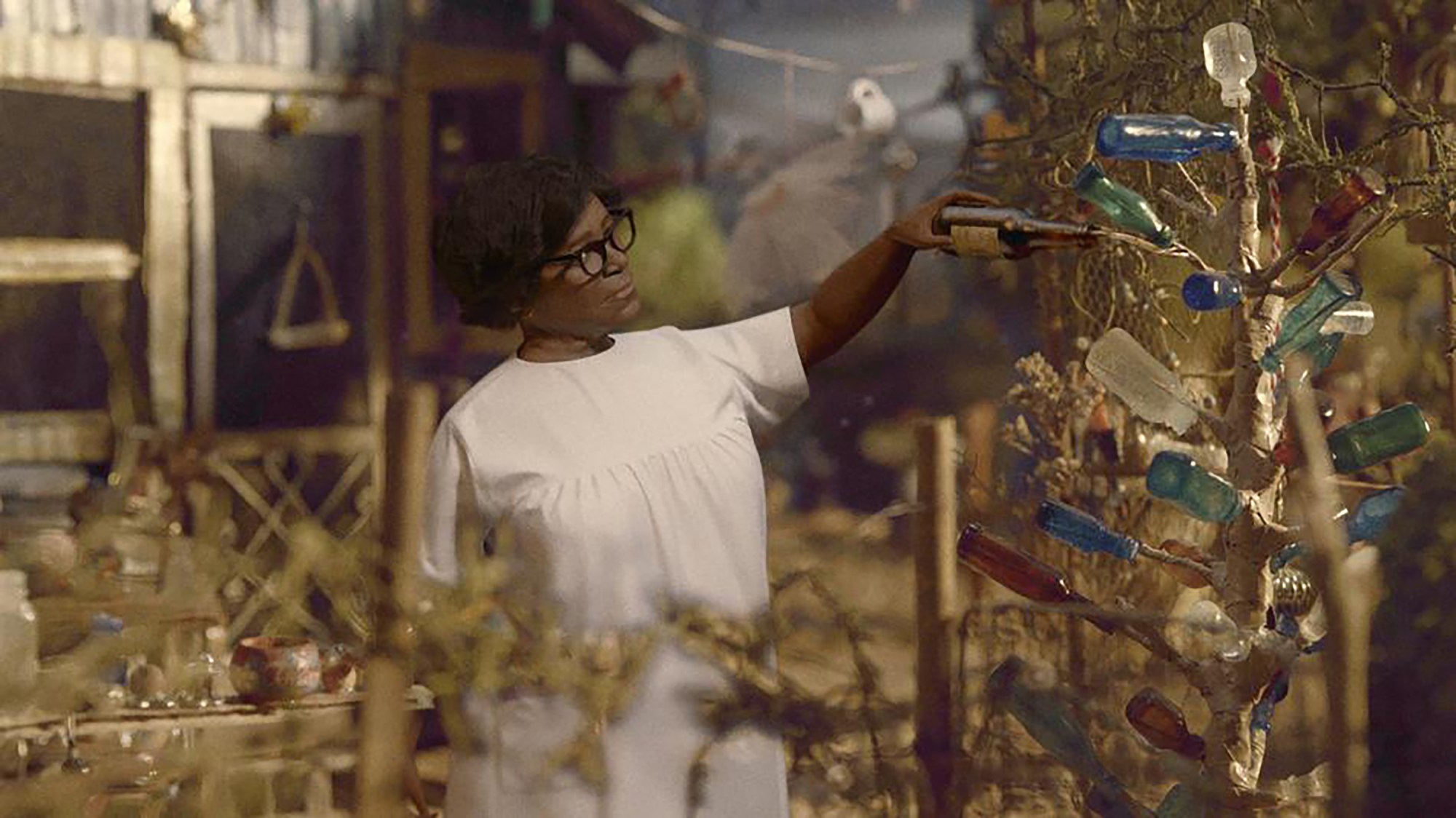
- Film
Docs: “This World Is Not My Own” Uses One Artist’s Life to Explore How Society Impacts Identity
Nonfiction films offer a great way to lift and celebrate the fascinating lives of lesser-known figures in all types of fields, shining a light on people from overlooked communities or influential figures who never really achieved mainstream appreciation. A great many such movies, however, spend a lot energy working to convince viewers of their subject’s brilliance, and thus noteworthiness. Then there’s This World Is Not My Own, which enjoyed its world premiere at South by Southwest on March 11 in the Documentary Spotlight section.
A unique and expansive work of unexpected connections, This World Is Not My Own takes the life and legacy of African American folk artist Nellie Mae Rowe as a leaping-off point to explore shared identities linked by the point-of-view of “otherness.”
The result, which deepens in value as it unspools, is an interesting portrait of not just one figure — but a broader rumination about intertwined lives not lived due to systemic bigotry or mundane societal and familial pressures.
Born in 1900 in Fayetteville, Georgia, Rowe was one of 10 children, the daughter of a sharecropper and a seamstress. Forced to work the fields starting at nine years old, Rowe ran away from the family farm and married at 16 years of age. In 1930 she moved to nearby Vinings, where she lived for the rest of her life.
She would survive two husbands and have no children. Upon becoming a second-time widow, in 1948, Rowe turned her modest home and its grounds into a “playhouse,” where creations hung in trees and bushes. Indoor rooms were filled with homemade dolls, drawings, and chewing gum sculptures. For most of her life Rowe made art in obscurity and for no particular economic gain, propelled by forces she viewed as granted by God.
But, again, This World Is Not My Own is no mere rah-rah biography. In short order, the film introduces Judith Alexander, whom it presents as very different from Rowe but perhaps also a kindred spirit. The daughter of a prominent Atlanta attorney, Alexander grew up in privilege. She loved art, and would briefly study under Hans Hofmann.
When summoned home to take care of her ailing father, however, Alexander burned her paintings and then opened her own gallery, widely credited as the first institution to introduce abstract art to the American South. Six years before Rowe’s death, the pair would strike up an intense friendship, with Alexander introducing Rowe’s work to the art world at large.
From there, a couple of other seemingly digressive strands soon emerge. The movie touches upon the story of Leo Frank – a Jewish factory superintendent convicted in 1913 (and later sprung from prison and lynched) in the murder of a 13-year-old girl – and Jim Conley, a janitor at the factory that was the murder scene. Slowly, connections come into focus between both the Rowe and Alexander families, as well as the Frank and Conley families. The film even winds its way forward, touching upon the Atlanta child murders of 1979 to 1981.
Stylistically, This World Is Not My Own challenges documentary conventions in its mixture of forms and, most especially, its editorial construction. Working with editor Princess Hairston, co-directors Petter Ringbom and Marquise Stillwell execute a narrative vision attached more to feeling than strictly linear storytelling.
Given that Rowe was poor, self-taught, Black, and female, and for most of her life not considered an artist so much as merely a local eccentric, there is a dearth of archival material, even if a great deal of Rowe’s art remains. So, yes, there are interviews aplenty.
Several academic and expert-in-field interviewees — including Katherine Jentleson, the curator of folk art at High Museum of Art, historian Reginia Perry, and curator emeritus for the American Folk Art Museum Lee Kogan — serve to provide a framework for Rowe’s work. The most interesting perspectives, though, tend to be the personal reminiscences that come from Rowe’s great-nieces and great-nephews.
This World Is Not My Own mixes traditional documentary techniques with 3-D animations and scripted scenes shot in intricately detailed sets. These sequences bring Rowe’s dynamic story to life and give the movie both heart and a slightly fantastical quality. Reimagining Rowe’s “playhouse,” these bits feature actresses Uzo Aduba and Amy Warren performing scenes based on quotes from and interviews with Rowe. Their recorded voices and movements as Rowe and Alexander, respectively, are then rendered as animation.
In concerning itself with constrictions both obvious and somewhat invisible, This World Is Not My Own aims beyond hagiography. Instead, it tries to explore the personal and political events which shaped an under-appreciated artist’s singular body of work, and asks how race, class, gender, and other factors impact our lives and relationships.
Its variety of form, meanwhile, serves to mirror the film’s thematic explorations of unforeseen connections, unusual coincidences, and personal reflection. Sometimes the quietest stories, This World Is Not My Own posits, can be not only among the most interesting but also actually related to our own.

